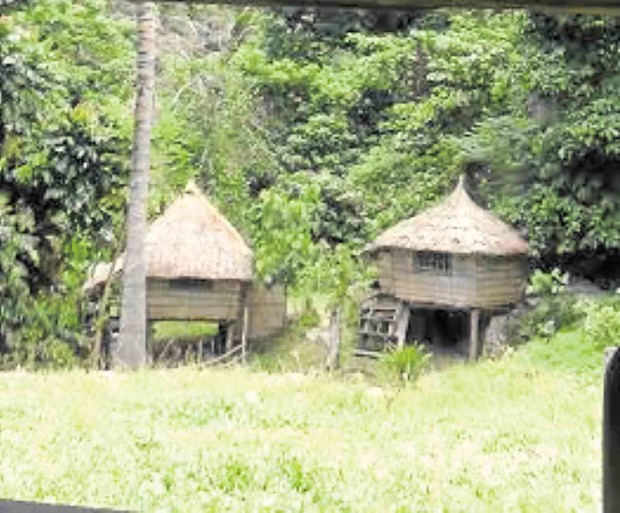Center keeps Mangyan culture alive

DA PIRMEDA PARAOYAN blends culture and ecotourism within a Mangyan community in the resort town of Puerto Galera in Oriental Mindoro.
The fear of a culture vanishing before his eyes has driven Leo Banaag, a community organizer, to do something worthwhile for his fellow Mangyan.
Banaag, 36, said he was alarmed after reading a study that the culture of the Iraya, one of the seven subtribes of the Mangyan people on Mindoro island, was slowly disappearing.
“So I dreamed and built a center where people can talk about how culture could be promoted. We call it Da Pirmeda Paraoyan, an Iraya term for a meeting place,” he said.
The center in the village of Baclayan sits on a hectare of land that is part of a certificate of ancestral domain title covering 5,000 hectares in Puerto Galera town in Oriental Mindoro province.
The mountain resort, whose facilities are powered by solar energy, is 350 meters away from the center of Baclayan. It overlooks Verde Island Passage, where the highest concentration of marine life in the world is found. It also offers a view of the town center and bay, considered one of the most scenic places in the country.
Mangyan settlement
Baclayan, whose name means a shortcut from another community or where clouds pass through to signal for rains, is the only mountain village in Puerto Galera, Banaag said.
About 200 families live in this 33-hectare Mangyan settlement. To reach the place, one can walk for one-and-a-half hours or hire a motorcycle, at P150, for a 20-minute ride. The center is 3.7 kilometers from the municipal center.
Four-wheeled vehicles can pass through the road leading to the village but drivers have to take caution due to road constructions for a windmill project.
The Iraya have married with some Mangyan Hanunuo and Tadyawan.
Baclayan faces a variety of problems. For one, high school students would go down to the town center and to save time and money, would put up makeshift houses as their transient homes. Their parents, who depend on farming for a living, would visit them to bring supplies from time to time.
‘Meeting place’
In mid-2000, after a trip to Israel, Banaag started building his dream with a pool in the middle of Da Pirmeda. There, the Mangyan are free to bond and relax, and need not go down to the sea.
The sulfuric pool is fed by a spring, from where traditional healers, or albularyo, collect water during the Holy Week for their healing activities the whole year. Its depth ranges from 3 to 7 feet.
Inspired by Tam-awan Village, an artists’ community in Baguio City, Da Pirmeda features traditional houses made from wood and leaves. Banaag, working on a limited budget, collected the materials and built the houses for months with some help from relatives.
Forest trees and mango and coconut trees surround the place.
Banaag said the inspiration for Da Pirmeda came from his travels and exposure to different cultures around the world.
From 2013 to 2015, Banaag represented Mindoro to a National Commission for Culture and the Arts program, where he learned about the national School of Living Traditions. He also represented the country in cultural exchange programs to Laos in 2009 and to the Asia-Pacific region and Japan in 2011.
Ecotourism
Da Pirmeda was opened to visitors on Nov. 22, 2009. Most of those who came are professionals who want to learn about Mangyan culture, Banaag said.
A Canadian friend invested P50,000 in the project, which, he said, helped him build three rooms. “I practically did all the construction—I was architect, carpenter, mason and laborer,” he said.
The center has a session hall, called Pulungan, which could accommodate at most 80 people.
The Iraya are famous for their handwoven items from native grasses and products, such as accessories and home decors, which are showcased in the center. Freshly harvested root crops, like camote (sweet potato), ube (purple yam) and gabi (taro), and native vegetables are sold in the center.
Visitors can arrange a hike, traditional meals, swimming, community and school visits, and tree planting from the center.
Cultural programs, consisting of Mangyan songs and dances, storytelling, native games and musical performances using traditional instruments, are also offered.
One can also learn traditional agriculture, fire lighting, bamboo tool making, copra making, basket weaving, hunting techniques, indigenous food preparation and other survival skills. Resource persons orient visitors on the intricacies of Mangyan law and the proper use of herbal medicines.
Visitors may stay overnight with a Mangyan family and enjoy bonfires.
Mangyan tour guides, some of them out-of-school youth, can accompany them on a variety of trails. A 4-6 km semijungle tour passes through Mangyan communities, while another 2.7-km trail designed for younger visitors and the elderly runs for four hours.
A 39-km jungle tour takes one to two nights and goes through the village of Talipanan to Puerto Galera’s White Beach.
The tours are coordinated with the barangay council and town officials to ensure the safety of visitors.
“We can cater to what guests are looking for, provided it is within the principles of the center. More than economic, this is about care for the Mangyan community and nature,” Banaag said.
(For visits, Da Pirmeda Paraoyan can be reached through mobile number 0920-6692668.)














